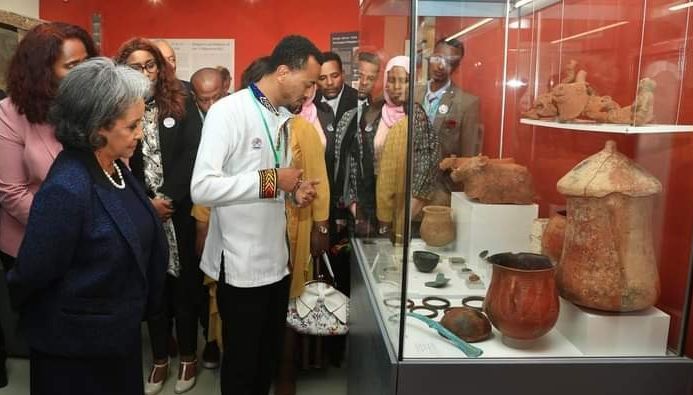On September 30th, last Friday, President Sahle-Work Zewde inaugurated a never-been seen before part of Ethiopia’s history. At the National Museum in Addis Ababa, a new permanent exhibition representing Ethiopia’s archaeological past now welcomes the public, from home and afar to be drawn into the mystical vortex of Ethiopia’s Antiquity.
The French Embassy in Addis Ababa and the Ethiopian Heritage Authority collaborated to organise the exhibition as the two nations celebrated 125 years of diplomatic ties. The treasures on display span the historical period known as pre-Axumite time, or the first millennium BC, through the 16th century, as well as the Mediaeval period.
The new collection expands the National Museum of Ethiopia’s holdings, which many consider to be among the most significant in Sub-Saharan Africa. It also has artwork on exhibit, from paintings by well-known current painters to parchments from the early 14th century.
The nation’s civilisation is one of the continent’s oldest and goes back thousands of years. Many of the spectacular objects on show attracted a large crowd of visitors who came to be among the first to see them.
The pride of Ethiopians, the incredible carvings, beautiful sculptures, coins, and other artefacts are a further testament to the country’s rich saga.
African Archaeology
The world’s longest continuous human habitation history is found in Africa. African archaeology is categorised as markedly distinct for Africa south of the Sahara, with the Paleolithic typically broken down into the Early Stone Age, the Middle Stone Age, and the Later Stone Age. The Pastoral Neolithic, the Iron Age, and succeeding historical eras follow these three phases.
The history of humanity can be studied through the lens of African archaeology. Amazingly, every academic tradition that exists now has influenced archaeological studies in Africa. The continent also features the world’s longest archaeological sequence, spanning from the hazy origins of humanity to the present.




